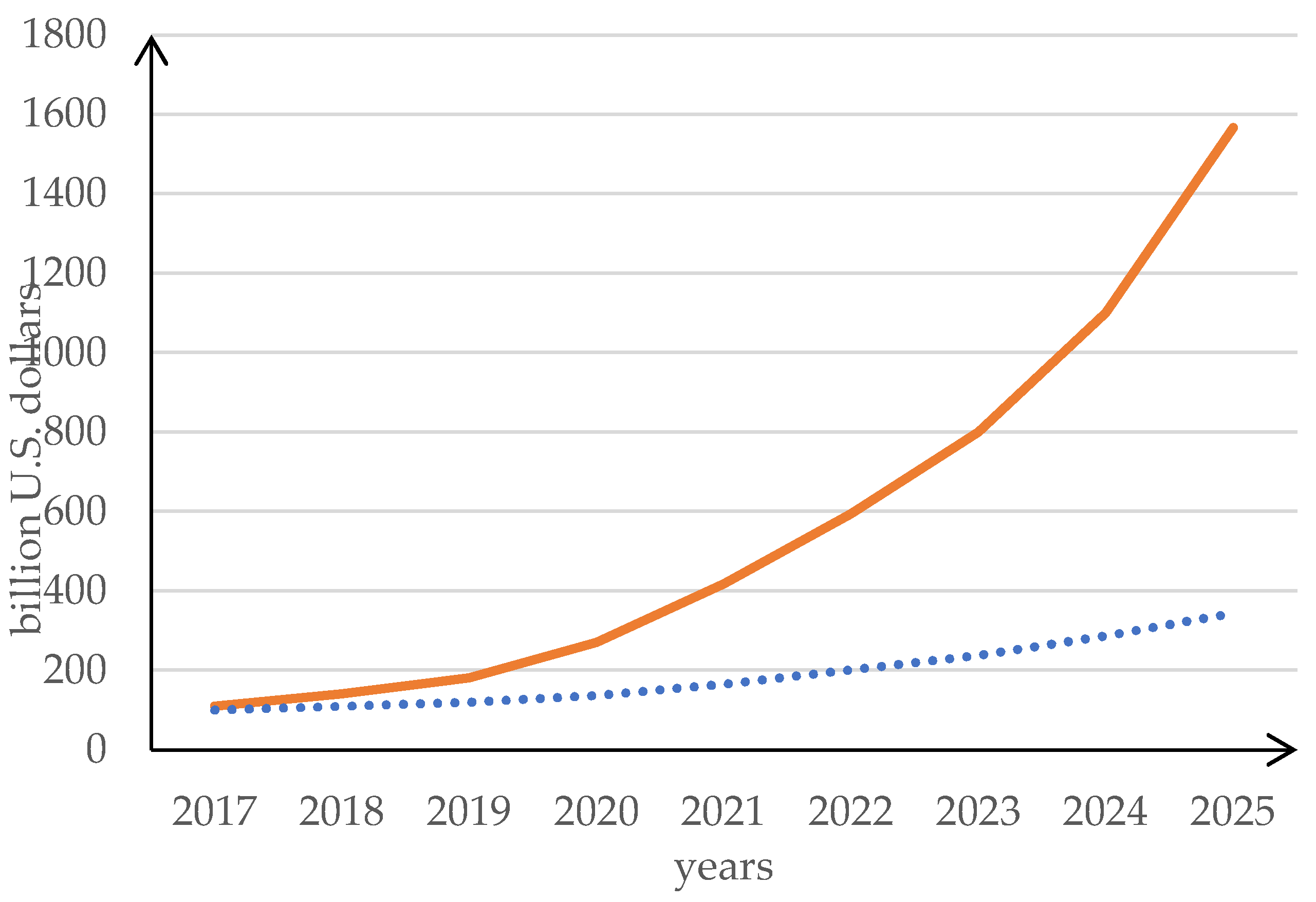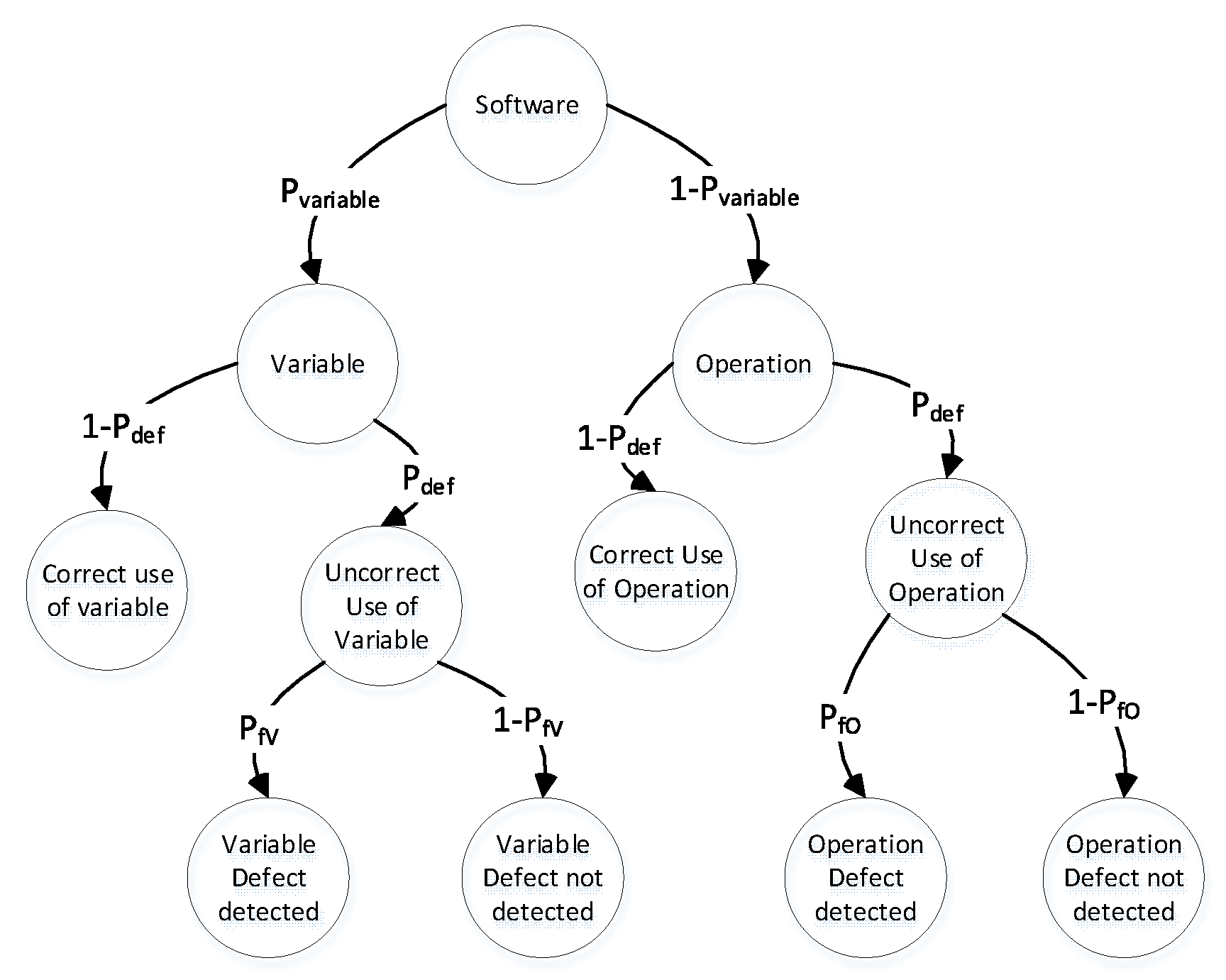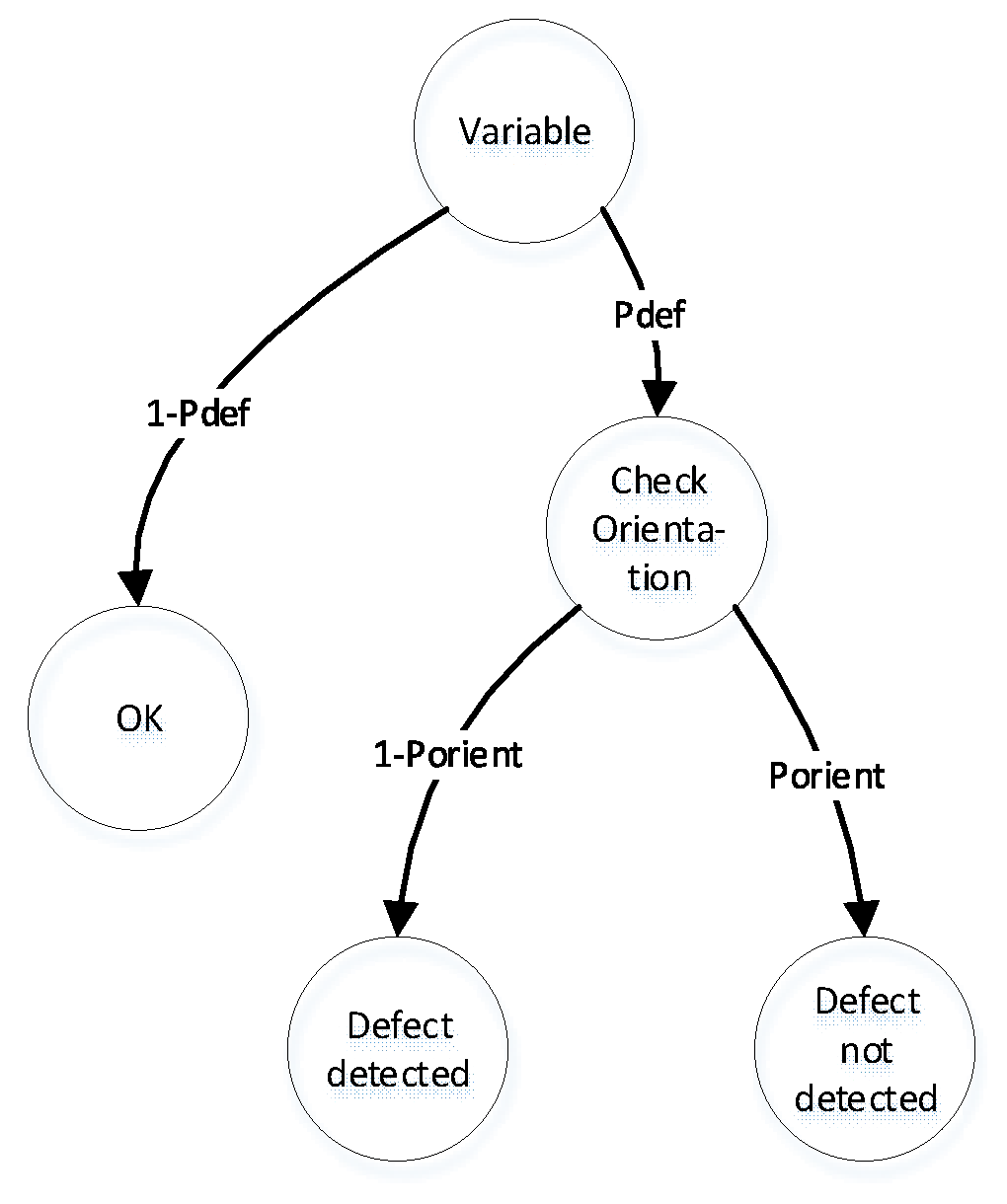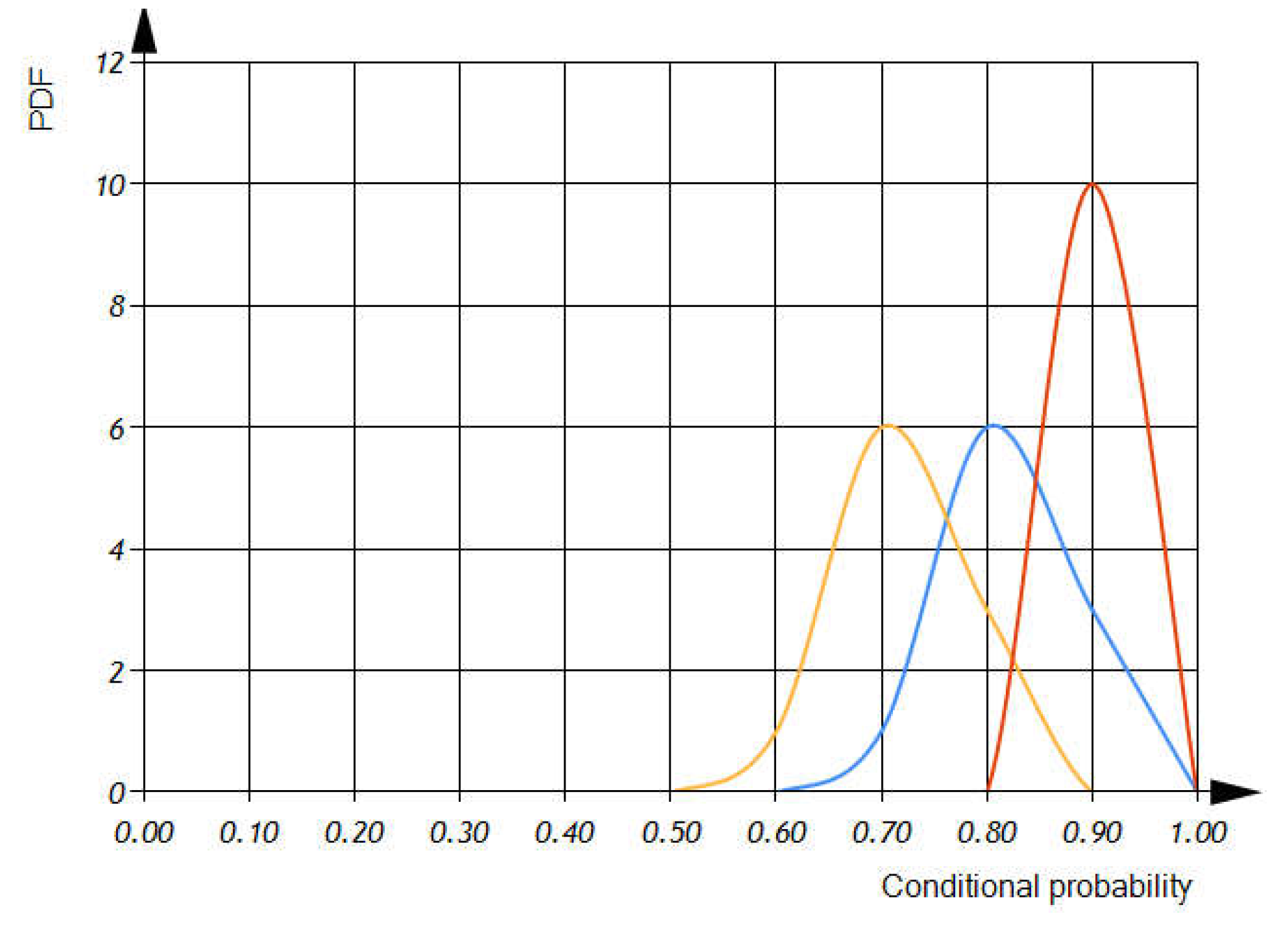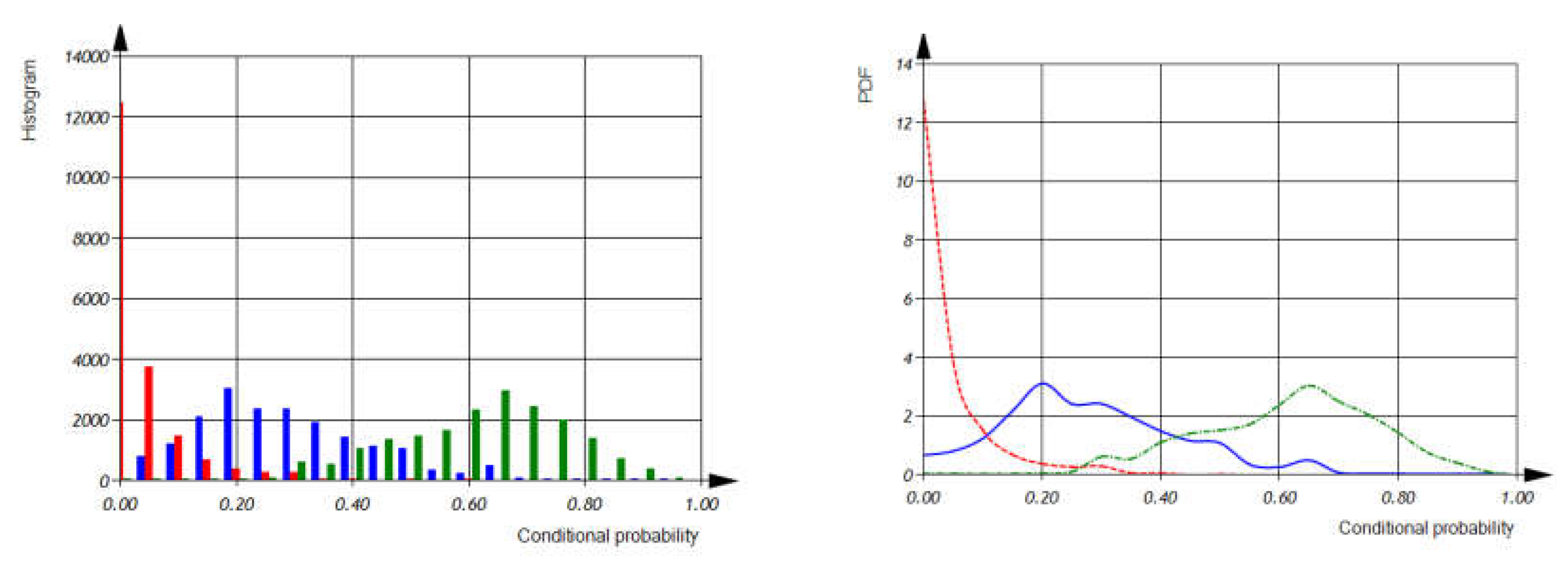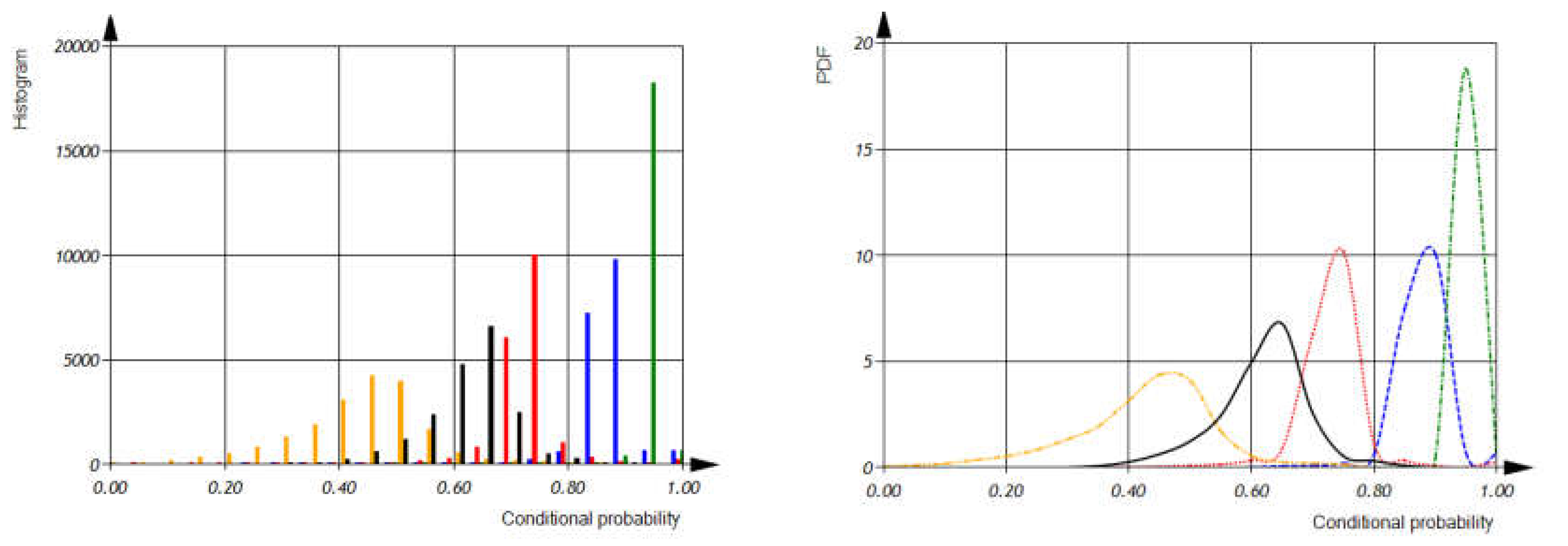1. Introduction
The Internet of Things (IoT) is a contemporary paradigm that comprises a wide range of heterogeneous inter-connected devices capable of transmitting and receiving messages in various formats through different protocols to achieve diverse goals [
1]. Presently, the IoT ecosystem encompasses over 20 billion devices, each with a unique identifier that can seamlessly interact via existing Internet infrastructure [
2]. These devices have diverse areas of application, ranging from inside the human body to deep within the oceans and underground. IoT refers to a network of physical devices, vehicles, buildings, and other items that are embedded with sensors, software, and other technologies to enable them to collect and exchange data. The main focus of IoT is on enabling communication between these devices to enable automation and control.
CPS (Cyber-Physical Systems), on the other hand, refers to a system of physical, computational, and communication components that are tightly integrated to monitor and control physical processes. CPS typically involves a closed-loop feedback control system that involves sensors, actuators, and computational elements to continuously monitor and adjust physical processes in real-time.
CPS integrates physical components with software components [
3]. CPS able to operate on different spatial and temporal scales [
4,
5]. CPS similar to the IoT.
Control systems coupled to physical systems are a common example of CPS, with applications in various domains such as smart grid, autonomous automobile systems, medical monitoring, industrial control systems, robotics systems, and automatic pilot avionics. CPS are becoming data-rich enabling new and higher degrees of automation and autonomy.
New, smart CPS drive innovation and competition in a range of application domains, including agriculture, aeronautics, building design, civil infrastructure, energy, environmental quality, healthcare, personalized medicine, manufacturing, and transportation. With the ability to collect and process data, CPS are becoming increasingly data-rich, enabling new and higher degrees of automation and autonomy.
Despite some similarities, the primary distinction between IoT and CPS is their focus. CPS is mainly focused on controlling physical processes, while IoT is primarily focused on communication and data exchange between physical devices. CPS is typically used in industrial and manufacturing settings, where it facilitates real-time control of physical processes. On the other hand, IoT has a broader range of applications, including home automation, healthcare, transportation, and other domains, where it enables seamless communication and integration of smart devices.
With the ever-increasing number of IoT and CPS devices, the need for more functional and high-quality software has become even more pressing. According to industry estimates, the global IoT market reached
$100 billion in 2017, and this figure is projected to soar to
$1.6 trillion by 2025 [
6]. In 2022, enterprise IoT spending rose by 21.5%, reaching
$201 billion. However, IoT Analytics has revised its growth outlook for 2023 to 18.5% (down from 24% previously) [
7], as shown in
Figure 1.
A model-based approach to CPS development is based on describing both the physical and software parts through models, allowing the whole system to be simulated before it is deployed.
There are several programming languages used in IoT and CPS development, including C/C++, Python, Java, JavaScript, and others. Among these, C/C++ is considered to be the most popular language for IoT development, with a popularity rate of 56.9%, according to recent research [
8]. This is due to the fact that IoT devices typically have limited computing resources, and C/C++ is capable of working directly with the RAM while requiring minimal processing power.
CPS languages provide a unified approach to describe both the physical components and control software, making it possible to integrate modeling and simulation. Open standards like FMI [
9] and SSP [
10] facilitate this integration by defining a model format that uses C language (for behavior) and XML (for interface) to represent pre-compiled models that can be exchanged between tools and combined for co-simulation.
Modelica [
11] has been utilized for automatic generation of deployable embedded control software in C code from models, enhancing its utility as a comprehensive solution for modeling, simulation, and deployment of CPS components.
The selection of a programming language for IoT and CPS development is highly dependent on the specific requirements of the project as well as the developer’s proficiency.
Using C++ in embedded systems can be an effective solution despite the limited computing resources of microcontrollers used in small embedded applications compared to standard PCs [
12]. The clock frequency of microcontrollers may be much lower, and the amount of available RAM memory may be significantly less than that of a PC. Additionally, the smallest devices may not even have an operating system. To achieve the best performance, it’s essential to choose a programming language that can be cross-compiled on a PC and then transferred as machine code to the device, avoiding any language that requires compilation or interpretation on the device itself, as this can lead to significant resource wastage.
For these reasons, C or C++ is often the preferred language for embedded systems, with critical device drivers requiring assembly language. If you follow the proper guidelines, using C++ can consume only slightly more resources than C, so it can be chosen based on the desired program structure. Overall, choosing the appropriate language for embedded systems can make a significant impact on performance and resource utilization.
The increasing number of IoT and CPS devices has resulted in a growing need for software that is both highly functional and of the utmost quality. As these devices become more ubiquitous and seamlessly integrated into our daily lives, the demand for dependable and efficient software becomes more critical than ever before. As a result, developers are constantly striving to enhance their software development methodologies and technologies to meet the ever-evolving demands of the IoT and CPS landscape.
However, given the increasing importance of IoT and CPS as emerging technologies, it is expected that there will be more literature available on the topic of IoT and CPS software verification and quality assurance.
The typical software development life cycle (SDLC) involves several steps, including requirement analysis, design, implementation, testing and verification, and deployment and maintenance. While testing can increase our confidence in the program’s correctness, it cannot prove it definitively. To establish correctness, we require a precise mathematical specification of the program’s intended behavior, and a mathematical proof that the implementation meets the specification.
IoT verification uses conformance testing [
13], randomness testing [
14], statistical verification [
15] and formal verification [
16]. Now there are method named as Model-Based Testing [
17]. Closely related to the Model-Based Testing, the Model Checking technique [
18] has its representatives in the specific IoT context.
However, such software verification is difficult and time-consuming, and is not usually considered cost-effective. In addition, modern verification methods would not replace testing in SDLC because most programs are not correct initially and need debugging before verification. The primary principle of verification involves adding specifications and invariants to the program, and checking the verification conditions by proving generated lemmas based on the requirement specifications [
19]. This makes program verification an alternative or complement to testing.
This article focuses on exploring a formal verification method that utilizes dimensional and orientational homogeneities and natural software invariants, specifically the dimension and orientation of physical quantities stated by the International System of Units (SI) [
20,
21], Siano [
22,
23] and authors [
24]. By leveraging these invariants, this method can effectively verify the correctness of software and detect errors that may arise due to inconsistent or incorrect use of units and dimensions, as well as incorrect usage of software operations, variables, and procedures, among other things. This approach can provide a reliable and efficient way to verify software correctness, especially for applications that involve physical calculations and measurements.
2. The formal software verification method
Proposed is the utilization of natural software invariants, which are the physical dimensions and spatial orientation of software variables that correspond to real physical quantities. By incorporating these invariants into the program specification, it becomes possible to convert all program expressions into a series of lemmas that must be proven. This enables the verification of the homogeneity and concision of the program.
2.1. Using Dimensional homogeneity in formal software verification
Dimensional Analysis (DA) [
25] is a widely used methodology in physics and engineering to find or verify relationships among physical quantities by using their physical dimensions. In the SI a physical quantity’s dimension is the combination of the seven basic physical dimensions: Length (meter, m), Time (second, s), Amount of substance (mole, mol), Electric current (ampere, A), Temperature (kelvin, K), Luminous intensity (candela, cd), and Mass (kilogram, kg). Derived units are products of powers of the base units, and when the numerical factor of this product is one, they are called coherent derived units. The base and coherent derived units of the SI form a coherent set designated as the set of coherent SI units. The word "coherent" in this context means that equations between the numerical values of quantities take the same form as the equations between the quantities themselves, ensuring consistency and accuracy in calculations involving physical quantities.
Some of the coherent derived units in the SI are given specific names, and together with the seven base units, they form the core of the set of SI units. All other SI units are combinations of these 29 units. For instance, plane angle is measured in radians (rad), which is equivalent to the ratio of two lengths; solid angle is measured in steradians (sr), which is equivalent to the ratio of two areas. The frequency is measured in hertz (Hz), which is equivalent to one cycle per second. The force is measured in newtons (N), which is equivalent to kg m/s2. The pressure and stress are measured in pascals (Pa), which is equivalent to kg/m s2 or N/m2. The energy and work are measured in joules (J), which is equivalent to kg m2/s2 or N m.
The fundamental principle of DA is based on the fact that a physical law must be independent of the units used to measure the physical variables. According to the principle of dimensional homogeneity, any meaningful equation must have the same dimensions on both sides. This is the fundamental approach to performing DA in physics and engineering.
DA can also be used for formal verification of software code. Existing software analysis tools only check the syntactic and semantic correctness of the code, but not its physical correctness. However, we can consider the program code of systems as a set of expressions consisting of operations and variables (constants).
By using DA, we can verify the physical consistency of the program code and detect errors that may arise due to inconsistent or incorrect use of units and dimensions.
To check the correctness of expressions, we can use the dimensionality of program values. Preservation of the homogeneity of the expressions may indicate the physical usefulness of the expressions. Violation of homogeneity will indicate incorrect use of a program variable or program operation. DA will provide an opportunity to check not only simple expressions, but also calls to procedures and functions. The use of physical dimension will allow to verify the software.
DA is a powerful tool that can be used to ensure the physical correctness of software code. By checking the dimensionality of program values, we can ensure the preservation of the homogeneity of expressions, which may indicate the physical usefulness of the code. In cases where homogeneity is violated, it may indicate an incorrect use of program variables or operations. DA can be applied not only to simple expressions but also to calls to procedures and functions, providing a comprehensive approach to verifying the physical consistency of the software.
We can think of software as a model, and DA can be used to validate this model by ensuring that it satisfies the physical laws and principles governing the system it represents. The use of physical dimensions in this validation process can help to detect and correct errors that may arise due to inconsistent or incorrect use of units and dimensions, ultimately leading to more reliable and accurate software.
Software System:= Sub_System{,Sub_System} – a set of interacting Sub_System
Sub_System := Unit{,Unit} – a set of interacting software units
Unit := operator{,operator} – a ordered set of interacting operators
Operator:=expression{, expression} – a ordered set of expression
Expression := AdditiveOperation|MultiplicativeOperation|FunctionCalling
Let’s introduce a set of "multiplicative" operations {*, / etc }, that generate new physical dimensions, while "additive" operations {+,-, =, <, ≤,>,≥,!= etc} act as checkpoints to ensure dimensional homogeneity. If source code has a set variables and every variable saves some physical dimension than we can use this property (dimensional homogeneity) as a software invariant.
Any software system, subsystem, or unit has a set of input parameters, I={in1, in2, in3, ..., ink}, and a set of output parameters, O={out1, out2, out3, ..., outk}. To ensure the dimensional correctness of a software system, we must prove the correctness of each subsystem. To prove the dimensional correctness of each subsystem, we must demonstrate the correctness of each unit. And to demonstrate the dimensional correctness of each unit, we must prove the correctness of each expression, which comprises variables and operations.
Based on the principle of dimensional homogeneity, we can develop a set of lemmas.
By utilizing DA, we can verify the physical dimensions of variables to detect errors caused by inconsistent or incorrect use of units and dimensions, as well as improper use of software operations, variables, and procedures. However, some variables have the same dimensions, such as moments of inertia and angular velocities. To identify software defects caused by incorrect use of variables, we need to inspect expressions involving angles, angular speed, and so on. However, according to the SI, angles are dimensionless values.
2.2. Using Orientational homogeneity in formal software verification
To address this issue, we can utilize features for transformations of angles and oriented values. Siano proposed an orientational analysis (OA) that involves extending physical dimensions to improve DA.
The use of OA can aid in expanding the base unit set while also ensuring dimensional and orientational consistency. Additionally, the OA technique can be applied for the formal verification of software code, allowing for a thorough evaluation of its accuracy and reliability.
Siano’s proposed notation system for representing vector directions involved the use of orientational symbols , , . Furthermore, an orientationless symbol represented by was introduced to represent vectors that do not possess a specific orientation.
For example, a velocity in the x-direction can be represented by , while a length in the x-direction can be represented by . Here, the symbol denotes that the quantity on the left-hand side has the same orientation as the quantity on the right-hand side. In non-relativistic scenarios, mass is considered an orientationless quantity.
In order for equations involving physical variables to be valid, they must exhibit orientational homogeneity, meaning that the same orientation must be utilized on both sides of the equation. Furthermore, it is crucial that the orientations of physical variables are assigned in a consistent manner. For instance, the representation of acceleration in the x-direction as , , and is only valid if both sides have the same orientation.
But what about orientation of time. From expression we can define the time as follows: .
The physical quantity of time is considered to be orientationless, meaning it does not possess a specific orientation in space.
In order to maintain orientational homogeneity, it is necessary to introduce a characteristic length scale , since time is an orientationless quantity. Therefore, can be expressed as and , ensuring that the orientation of remains consistent. That is why .
It is essential to assign orientations to physical variables in a consistent manner. For instance, pressure is defined as force per unit area. If the force is acting in the z-direction, then the area must be normal to it etc.:
, , .
In order for pressure to be considered an orientationless quantity, the area S must have the same orientation as the force F. If the force F is in a particular direction, then the area S must be normal to that direction, meaning that both variables have the same orientation. Therefore, pressure can only be orientationless quantity if this consistent orientation is maintained.
We can define as follows:
, , , , , .
If , , a volume of space, V, is orientationlless quantity:
, , Let us take a look at uniformly accelerated motion in the x-direction:
, where – total distance, - initial distance, - velocity, - acceleration.
According orientational homogeneity
, , , The orientation of derived physical variables, such as kinetic energy, can be determined by properly assigning orientation to primitive variables and applying the corresponding multiplication rules:
, , Consider the orientation of an angle in the x-y plane. Because, and we deduce that and an angular velocity .
Let us take series:
sine, cosineIf has any orientation, then sine() would also have that orientation, while the cosine() would be an orientationless quantity. This is because the sine function involves the odd powers of , while the cosine function involves the even powers of .
Siano demonstrated that orientational symbols have an algebra defined by the multiplication table for the orientation symbols, which is as follows:
and rules: Based on the above, the product of two orientated physical quantities has an orientation as follows:
, , , If a source code contains variables that represent physical quantities with orientations, we can use the property of orientational homogeneity as a software invariant. By applying orientational homogeneity, we can transform the source code into a set of lemmas. Multiplicative operations, such as multiplication and division, introduce new physical orientations. On the other hand, additive operations such as addition, subtraction, and relational operators (e.g., =, <, ≤, >, ≥, !=) serve as checkpoints for verifying orientational homogeneity.
2.3. Examples of software formal verifications
Example 1. Consider the expression , where is a force with physical units of [kg m s-2], is the mass in [kg], and is the acceleration in [m s-2]. This expression allows us to derive the orientation and dimension of the product . If is orientationless (denoted by ) and is in the x-direction (denoted by ), then has the x-orientation. If has units of [kg] and has units of [m s-2], then the dimensions of the result are [kg m s-2]. The assignment operation "=", which is also known as the equality operator, acts as a checkpoint for our software invariants. It ensures that the physical orientation of is equal to the physical orientation of , and that the physical dimensions of are equal to the physical dimensions of the result.
Example 2. Consider the expression , where represents the total distance, is the initial distance, is the velocity, is the acceleration, and t is the time. This expression generates two new physical dimensions and orientations: and . The second "+" operation checks the dimensions and orientations of and . The first "+" operation checks the homogeneity of and the result of the previous operation. Finally, the assignment operator "=" checks the homogeneity of and the result of the previous operation. By checking the homogeneity of these variables and operations, we can ensure that the physical dimensions and orientations are consistent throughout the expression.
Example 3. When calling procedures and functions, it is not always possible to check the physical dimensions & orientation of the arguments. However, for function signatures such as Type1 someFunction2(Type2 x...), where Type1 and Type2 have information about the physical dimensions and orientations of their arguments, it is possible to check the physical dimensions and orientations of the arguments. Each argument of a function generates a special lemma that can be used to prove dimensional and orientational homogeneities. Only after proving all the lemmas can we prove the correctness of the function call. It is important to note that arguments of exponential and logarithmic functions must be dimensionless and orientationless to preserve dimensional and orientational homogeneities. On the other hand, arguments of trigonometric functions such as sine(x), cosine(x), and tan(x) must be orientated to preserve orientational homogeneity, while also being dimensionless to preserve dimensional homogeneity. The proposed method allows for the checking of physical dimensions and orientations in software units. Repeating this checking helps to ensure the correctness of the software system.
Example 4. Let us take a look at Euler’s rotation equations [
26], which have various applications in fields such as cyber-physical systems (CPS) and the Internet of Things (IoT), including unmanned cars, helicopters, and other aerial vehicles.
The general vector form of the equations is , where M represents the applied torques and is the inertia matrix. The vector represents the angular acceleration.
In orthogonal principal axes of inertia coordinates the equations become
where
,
are the components of the applied torques [kg m
2s
-2];
,
,
are the principal moments of inertia [kg m
2];
,
,
are the components of the angular velocities [s
-1];
,
,
have dimension [s
-2]. However,
,
,
,
have different orientations
, where
.
We can verify the dimensional homogeneity of equation (1), but it is not possible to identify all defects. This is because certain quantities have the same dimensions and cannot be distinguished solely based on their units. For example, the dimensions of the moments of inertia (, , ) are [kg m2] and angular velocities (, , ) are [s-1], and the dimensions of the angular acceleration components (, , ) are [s-2], since angles are dimensionless. Therefore, while dimensional analysis can help identify some potential issues with the equation, it may not be able to catch all possible defects.
In the context of equation (1), the parameters (, , etc.) may have different orientations or values, which can help in detecting defects.
Furthermore, checking both the dimensional and orientational homogeneities of an equation can improve our ability to detect defects and ensure its correctness. This approach can be useful in formal verification of CPS and IoT software, as it can help identify potential issues before they lead to real-world problems.
Let us assess the probability of detecting a software defect using both DA and OA.
2.4. Software defect detection models
2.4.1. General software defect detection model
To simplify the analysis, we assume that the software system can only have one defect with a probability of
. The model starts with the initial event state of "Software" and branches out into two possible outcomes at the next level: "Software has a defect" and "Software does not have a defect", with probabilities of
and
, respectively. A tree diagram can be utilized to represent the event space of this defect detection process, as shown in
Figure 2.
In the state "Software has defect", our focus shifts to detecting the defect. At the third level, the model branches out into two possible outcomes: "Defect detected" and "Defect not detected", with probabilities of and , respectively.
To define the conditional probability of software defect detection, we use the following formula: .
We can also introduce a more complex general software defect detection model (see
Figure 3), which accounts for two types of defects: variable defects and operation defects. Despite the presence of multiple types of defects, the model still assumes that there is only one defect present in the system at any given time.
In this more complex model, the software system can have two types of defects: variable defects and operation defects. A "Variable defect" occurs when there is an incorrect usage of a variable in the code, such as using the wrong variable name. An "Operation defect" occurs when there is an incorrect usage of an operation in the code, such as using the wrong operator symbol. Despite the presence of these two types of defects, the model still assumes that only one defect is present in the system at any given time.
In this more complex model, the initial event state is "Software". At the second level, the model branches out into two possible outcomes: "Variable" and "Operation", with probabilities of and , respectively.
The "Variable" state has two potential outcomes at the next level: "Correct use of variable" and "Incorrect use of variable", with probabilities of and , respectively.
The "Incorrect use of variable" state then branches out into two possible outcomes at the next level: "Variable defect detected" and "Variable defect not detected", with probabilities of and , respectively. Here, represents the probability of detecting a variable defect in the source code.
In addition to the "Variable" state, the model also has an "Operation" state, which has two possible outcomes at the next level: "Correct use of operation" and "Incorrect use of operation", with probabilities of and , respectively.
The "Incorrect use of operation" state then branches out into two possible outcomes at the next level: "Operation defect detected" and "Operation defect not detected", with probabilities of and , respectively. Here, represents the probability of detecting an operation defect in the source code.
The conditional probability of a software defect can be defined as:
As per the expression (2), the conditional probability of software defect detection depends on the probability of the software variables used in the source code and the conditional probabilities of detecting defects (defects of operations and defects of variables). We can determine the value of by analyzing the software code statically, i.e., without executing the code. However, to determine the value of , we would need to build additional software defect detection models.
2.4.2. Simple model detection of incorrect use of variable based on DA
Next, we present the Simple model for detection of incorrect use of variable based on DA, illustrated in
Figure 4.
This model has an initial state of ’Variable’. The initial state has two transitions to states ’OK’ and ’Check dimension’ with probabilities and , respectively. In the state ’Check dimension’, we can evaluate the required physical dimension of the variable using dimensional analysis, such as length, mass, time, thermodynamic temperature, etc.
If fact physical dimension equal to needed physical dimension we can‘t detect the software defect. In other case we can detect the software defect. This case has probabilities and , where is a probability of event when two random variables have same physical dimension.
Thus, to determine the conditional probability of defect detection of incorrect use of a program variable, we need to know the probability .
Let us define the conditional probability of defect detection of incorrect use of a program variable as follows
Let us consider a set of distinct software variables and a set of diverse physical dimensions , where represents the cardinality of set and represents the cardinality of set .
To depict the relationship between these variables and dimensions, we can make use of an
-matrix (4):
The equation for the total quantity of usages of all software variables which have the same j dimension can be written as:
where n
ij represents the total quantity usage of i-variable which has a j-physical dimension, and N
V is the cardinality set of software variables.
Equation (5) shows that the total number of variable usages in the code:
To define the probability of choosing i-variable and j-variable with the same dimensions, we can use the total number of usages of variables with the j-physical dimension and the total number of usages of all variables in the code:
According to (7), the probability of choosing two random variables that have the same physical dimension is given by the following equation:
Based on (1) and (8), we can define the conditional probability of software defect detection as:
where
– the item of
matrix – the quantity of using of
i-variable which has
j-physical dimension.
For increasing of conditional probability detection of incorrect use of software variables we need to use other independent property of variables. Using additional independent properties of variables can help increase the conditional probability detection of incorrect use of software variables. This is because using multiple properties helps to reduce the chance of false positives and increase the reliability of the detection model.
2.4.3. Simple model detection of incorrect use of variable based on OA
In many cases, variables in CPS or IoT have not only physical dimensions but also orientation information, which can be utilized to enhance the software quality of these systems. Therefore, we introduce a Simple model for the detection of incorrect variable use based on OA (see
Figure 5).
According
Figure 5 the initial state of model is “Variable”. This state has two transitions to states ’OK’ and ’Check orientation’ with probabilities
and
, respectively. In the state ’Check orientation’, we can evaluate the required physical orientation of the variable using orientation analysis, such as
,
,
and
. If the physical orientation of the variable matches the required orientation, we cannot detect a software defect. However, if the physical orientation is different from the required orientation, we can detect a software defect.
This case has probabilities and , where is the probability that two randomly selected variables have the same physical orientation.
Now we need to define .
This defect model is similar to the dimension defect model of variables. However, in this case, we have four different orientations and
different variables. We can describe the relation between variables and their orientation using an
M matrix:
where
is a direction of orientation and
k=0, x, y, z.
Because, every software variable (as a host of a physical value) has only one orientation, every i-row of matrix has only one non zero number – the item of M matrix – the number of using of i-variable which has k-orientation.
That is why we can use the expression (8) for definition the condition probability of orientation defect detection (11)
We can increase the conditional probability of software defect detection via concurrent using of DA & OA. Concurrently using DA and OA can increase the conditional probability of software defect detection because it allows for detecting both dimension and orientation defects in software variables. By combining these two methods, we can improve the accuracy of defect detection and reduce the likelihood of undetected defects.
2.4.3. Complex model of detection of incorrect use of variable via OA and DA
The Complex model of detection of incorrect use of variable via OA and DA describe on
Figure 6
After substitution expressions (9,11) in the (12) we have
To evaluate the correctness of the conditional probability of software defect detection using DA and OA, we need a model for detecting incorrect use of operations. This model should take into account the types of operations that are commonly used in CPS and IoT software, as well as their potential incorrect use.
2.4.4. Model of detection of incorrect use of operation via OA and DA
Let us consider three subsets of C++ operations: “additive” (A), “multiplicative” (M), and “other” (O) operations
A={"+", "-", "=", "==", ">=", "<=", "!=", "<", ">", "++", "--", ".*", "->*", ",", ".", "->", "+=", "-=", "**"},
M={"*", "/", "%", "*=", "/=", "%=" },
O={"||", "&&", "&", "|", "^", "~", "<<", ">>", "::", "?", "<<=", ">>=", "&=", "|=", "^=" }
(14)
In addition, we are given three probabilities associated with the utilization of this operation in the source code, namely,
,
, and
.
Let us define
,
,
follows as
where
,
,
– total number of operations in file.
In this case, we can build a tree diagram - a model of detection of incorrect use of operation via DA & OA. The model allows us to define the conditional probability of operation defect detection (see
Figure 7).
This model also has an initial state of "Operation" and states of "Additive operation", "Multiplicative operation", and "Other operation". After a random mutation of operations, any operation can be replaced by another operation. These events have probabilities
,
,
,
,
,
,
,
,
. Additionally, we can conclude that
,
,
. We can define the conditional probability of detecting incorrect use of software operations as:
where
,
,
,
,
,
,
,
,
.
Because,
,
and
3. Results
After analyzing the source code of Unmanned Aerial Vehicle Systems (total volume of 2 GBytes and a total number of files of 20,000) saved on GitHub using our own statistical analyzer, the statistical characteristics of the C++ source code were defined:
Distribution
– total number of different variables per file (
Figure 8).
Distribution
- total number of i-variable use per file (
Figure 9).
Because, Total sum of entries in the columns equals 20000. The integral of the probability density function should be equal to one, as it represents the total probability distribution of the variable.
According to expression (13) and the distributions described in
Figure 8 and
Figure 9, as well as the uniform distribution for both
and
, we can obtain the
shown in
Figure 10.
According to Figure 10 we can see that the mean value of the conditional probability of software defect detection through dimension analysis is 0.8, while the mean value of the conditional probability of software defect detection through orientational analysis is 0.7. Since OA and DA are independent, the mean value of the total conditional probability of software defect detection is 0.9.
Based on the statistical data of C++ source code:
=0.309±0.161 [0.000... 0.999]; =0.056±0.056 [0.000... 0.636]; =0.635±0.155 [0.000... 0.992] and the conditional probability of detecting incorrect use of software operations as .
According to expression (16) and the distributions of
,
,
(as shown in
Figure 11) we can calculate the distributions of
,
, and
(as shown in
Figure 12).
According distributions of
,
, and
we can calculate the distribution of the conditional probability of operation defect detection (as shown in
Figure 13). The mean value of the conditional probability is 0.45.
After analyzing real C++ code statistically, we built the distributions of
and
(as shown in
Figure 14).
Now, we can calculate the conditional probability of software defect detection based on the real source code and the proposed defect models (see expression (2)). Let be the conditional probability, then we have , where - is conditional probability of variables in the source code, , - is conditional probability the defects detection of variable using defect in the source code, - is conditional probability the defects detection of operation using defect in the source code
In the next figure,
Figure 15, we can see histograms of the conditional probabilities of defect detection.
The proposed method of formal software verification based on dimensional analysis and orientational analysis has demonstrated high effectiveness in detecting over 60% of software defects, including those related to incorrect usage of variables, operations, and functions.
